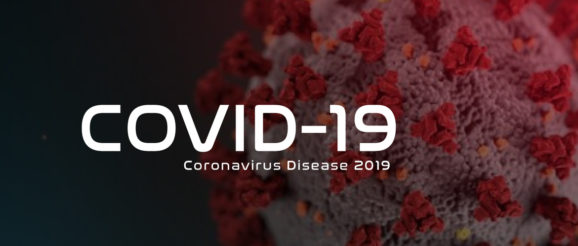How Artificial Intelligence is Aiding the Fight Against Coronavirus – Center for Data Innovation

The coronavirus (COVID-19) has dominated the global news and resulted in travel restrictions, school closures, market panic, and many more disruptions as health organizations work to contain the spread of the virus. With over 125,000 confirmed cases and over 4,500 deaths worldwide and over 1,600 cases and 41 deaths in the U.S., and the World Health Organization (WHO) officially labeling the virus as a pandemic, the global health community is relying on new tools and technologies to stay ahead. Artificial intelligence (AI) has proven especially valuable every step of the way, from detecting the first coronavirus outbreak to measuring the disease’s economic impact.
The Canadian company BlueDot caught the virus early thanks to its AI algorithm, which looks at more than 100 datasets—including news sources, airline ticket sales, demographic data, climate data, and animal populations—to predict and track the spread of disease. BlueDot detected an outbreak of pneumonia cases in Wuhan, China on December 31, 2019 and identified the cities that were at the highest risk of facing outbreaks of their own.
A team of researchers working with Boston Children’s Hospital has also developed an AI system to track the spread of coronavirus. Called HealthMap, the system integrates data from Google searches, social media and blog posts, and chat rooms: sources of information epidemiologists don’t typically use but which are useful for identifying early signs of an outbreak and gauging the public’s reaction. Early detection is crucial when responding to infectious diseases like coronavirus, and tools like BlueDot and HealthMap aid in those efforts.
In order to effectively track the spread of a disease, hospitals need to be able to accurately test for it. To accomplish this, two Chinese companies have developed AI-enabled software to diagnose coronavirus. Beijing-based startup Infervision trained its software to detect lung problems on CT scans. Originally used to diagnose lung cancer, it can also detect pneumonia associated with respiratory illnesses like coronavirus. At least 34 Chinese hospitals have used the technology to help them review 32,000 suspected cases.
DAMO Academy, the research arm of Chinese company Alibaba, also trained an AI system to recognize coronavirus with up to 96 percent accuracy. The system can evaluate the 300 to 400 CT scans it takes to diagnose coronavirus in 20 to 30 seconds, much faster than the 10 to 15 minutes it would take a doctor to go through the same number of scans. This frees up doctors, who struggle with limited time and resources on the front lines of the ongoing pandemic, to focus on more important tasks. So far DAMO’s system has helped at least 26 Chinese hospitals review over 30,000 cases.
In South Korea, biotech company Seegene used its automated assay development system to quickly develop and distribute testing kits for coronavirus based on the virus’ genetic makeup. The kits would have taken two to three months to develop without AI; with AI, they took weeks. As a result, South Korea hasn’t suffered from the same shortage of test kits that other countries are struggling with. The country has equipped 118 medical facilities with the tests and has tested more than 230,000 people.
Currently there are no approved treatments or vaccines for COVID-19, but medical researchers are working hard to change that. First, researchers need to understand the virus’ structure. AI-generated predictions of a virus’ structure can save scientists months of experimentation, so companies can hopefully make treatments and vaccines available while an outbreak is still ongoing instead of years later. DeepMind, a subsidiary of Google’s parent company Alphabet, shared its predictions of coronavirus’ protein structures, which it generated using its AlphaFold AI system. Similarly, Chinese company Baidu made its AI algorithm Linearfold available for researchers to predict the virus’ structures.
Once the global health community has coronavirus under control, markets will still have to grapple with the economic effects of the disease. Chinese company WeBank is using AI to track China’s economic recovery. The system analyzes satellite imagery, GPS data from mobile phones, and social media posts, which reveal the state of manufacturing and commercial activity. Using the data the system gathered, researchers predict that most Chinese workers outside Wuhan will return to work by the end of March and that China’s economic growth in the first quarter of 2020 will decrease by 36 percent.
New technologies are constantly enabling doctors and scientists to improve the ways they prevent, diagnose, and treat disease. AI is one such technology, and though it has its limits, it plays a vital role in allowing health experts to take full advantage of the vast amounts of data at their disposal, making accurate predictions and saving precious time in a crisis. Investments in AI and data science create important tools these experts need when faced with unexpected situations like the coronavirus pandemic.
